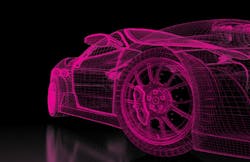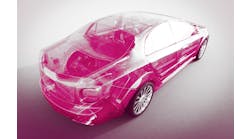NASHVILLE, TENN., Dec. 6, 2021—As the complexity of vehicles continues to advance, it will become critical for all segments of the industries—collision and mechanical repair, as well as tire and quick lube—to come together and both learn from each other and work together.
That was the message from the panelists during the “TECH Talk: The Changing Landscape” panel at the ADAPT: Automotive Technology Summit.
“We have to come together on a standard and say this is what we’re going to teach and this is how we’re going to repair cars,” said Donny Seyfer, owner of DLS Consulting and former shop owner. “If we don’t do that, people will lose businesses over liability cases.”
Former Advance Auto Parts veteran and newly appointed Repairify vice president of training Chris Chesney kicked off the discussion by asking the panelists the biggest friction points they’ve dealt with in their respective roles. Those friction points and challenges included the following:
1) Distinguishing diagnostic time and scan time.
“Scanning hit our industry head on; calibrations is the next Mount Everest for us to climb,” said Mike Anderson, owner of collision repair consulting firm CollisionAdvice. “We need to separate out the diagnostic time from the scan time. … People thought they could have a lesser skilled person do the scanning. Diagnostics is where the skillset is at, not scanning. People thought scanning was this golden magic wand that would identify everything.
“Some of the friction points between insurers and shops, we created it ourselves. It’s trying to undo the mess we created. The best thing to do is itemize each step out. ”
2) The need for technician protection.
Seyfer noted that when it comes to insurance protection, there’s very little available for technicians, which could pose major problems when it comes to liability.
“Our guys really aren’t covered if something happens,” he said. “[The insurance companies] still think mechanics turn wrenches. That’s still their mentality.”
3) Misconceptions around artificial intelligence (AI).
Yes, AI is here and being used in many applications (in all aspects of daily life), but that doesn’t mean that it’s a be-all, end-all, said Mark Fincher, vice president of market solutions at information provider CCC Intelligent Solutions.
“We’re making significant advances, but AI is not in a place today where it can write estimates on its own,” Finisher said. “The first iterations of AI have been more about assisting; it’s an assist for the user to identify those low-value tasks where we can use computer vision to identify damage on a panel and correlate that damage to an estimate that’s been written.
“[CCC] has $1 trillion worth of claims that we have processed in our system and we can take that and start to build correlations to help with that assist. AI is a journey, not a single event. There’s still a big component of human intelligence.”
The advantage, however, to AI is that it can assist team members, Anderson emphasized.
“We can’t expect our people to read through 400 pages of OEM repair procedures,” he said.
4) Today’s technicians do not have the same knowledge base.
The fact is, Seyfer said, new technicians simply do not have the same “institutional knowledge” that veteran technicians do. That makes it vital that they have knowledge available to them at their fingertips that is easily available, user friendly and easy to locate.
“People aren’t taking jobs for life anymore,” he said. “So, how do you take someone who isn’t here for life and make them profitable for themselves and the business?”
5) For optimal workflow, processes must change.
All panelists agreed that the processes of yesterday will no longer serve the workflow of today. That includes how the front and back of the shop work together, the way team members are paid, and how the shop floor is structured.
“These very smart people who repair cars are much better when you allow them to stay focused and don’t break that focus. When you do that, you lose productivity,” Seyfer said. “The front end has to think about how we’re going to handle that, too. If you want [technicians] to handle procedures correctly, you can't take them off the procedures.”
On the collision side, Anderson said that photo estimates can actually be an asset to this, as they can be used to triage work and achieve the right work mix for the level of technicians in the shop.”
As the discussion wrapped up, all the panelists passionately emphasized the need to perform repairs correctly, regardless of industry segment.
“We have to serve the technician,” Chesney said. “The collision side of the business has had to do things right to be viable. They can’t afford a miss because it erodes their margin. On the mechanical side, we have to pay attention to what they can teach us.
On the mechanical side, we’ve used these tools for years. We can help. We can learn from each other. The goal of this conference is to bring both sides together, so we can learn from each other.”
Anderson even cautioned that he believes in the near future, collision shops that are not certified by the OE may even be restricted from parts sales for some of the ADAS components, which could have significant consequences as ADAS begins to impact claim count in the industry more directly.
“That’s where we have to use technology to improve our capture rate and focus on capture rate,” he said.
Fincher agreed, adding that it will become increasingly critical to not only utilize emerging technology, but embrace it, as well.
“I know you’ll continue to see more AI injected into your workflow, the technology you use, the front office side. It’s important to understand it and not be afraid of it to differentiate your business,” he said.
Of course, being able to do all of that boils down to having the right team, a struggle between the technician shortage and the current Great Resignation. But as the stakes become even higher for shops to repair vehicles correctly, being picky—perhaps even creating a licensing program—just might be necessary.
“In 1973, ASE was formed because the industry didn't want licensing. We made our bed. We’re there,” Seyfer said. “We have radically failed our techs because they’re not up to speed. We all have a great technician in the shop, but we also have another one that might not pass if they had to take those tests. There’s no possible way that the government can do this for us. They’re not smart enough. The cars are that complex.”


